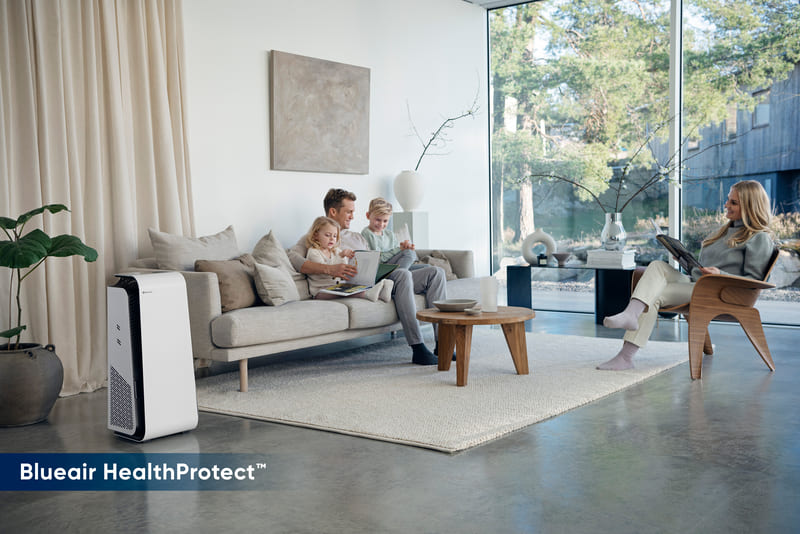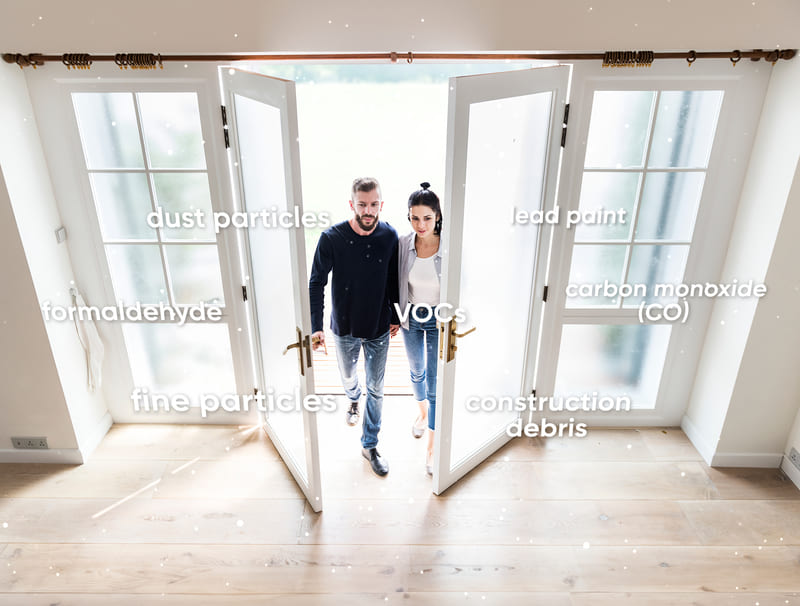Moving into a new or newly renovated house is an exciting accomplishment that symbolises a significant milestone in one’s life.
It serves as a tangible reward for hard work and dedication. However, amidst the joy and anticipation of moving into a new home, there is an often-overlooked aspect that can have serious implications for one’s health: the potential health hazards associated with new houses.
Newly constructed or renovated houses can harbour a range of hazards that pose risks to the occupants’ health. These hazards arise from various sources, including construction materials, paints, and chemicals used during the building process. It is crucial for homeowners to be aware of these potential dangers and take appropriate measures to mitigate the impact on their well-being.
One of the most significant health hazards commonly found in new houses is lead paint. Shockingly, a study conducted by the Nexus3 Foundation in 2021 revealed that about three-quarters of the solvent-based decorative paints sold for home use in Indonesia contained lead levels exceeding the regulatory safe limit of 600 parts per million (ppm). Exposure to lead can be particularly harmful, especially for young children and pregnant women, leading to developmental delays, cognitive impairment, and other serious health issues.
In addition, to lead, other chemicals present in and around the home pose significant health risks. For example, new carpeting can contain formaldehyde, a chemical known to cause irritation of the skin, eyes, nose, and throat. Furthermore, building materials such as varnish, adhesives, and sealants may release harmful volatile chemicals into the air, contributing to indoor air pollution.
Dust and fine particles are major pollutants in new houses, causing discomfort and health hazards. They can lead to respiratory problems, eye irritation, skin irritation, coughing, sneezing, and headaches.
High concentrations of dust and fine particles can accumulate inside a new house due to specific construction materials used and the activities taking place during the construction or renovation process. Here are some common sources to consider:
- Drywall: Sanding drywall joints and applying drywall compounds can generate a significant amount of dust particles, especially if proper dust containment measures are not in place.
- Woodwork: Sawing, sanding, or cutting wood for construction purposes can produce sawdust and fine wood particles that contribute to indoor dust.
- Flooring materials: Installation or removal of carpets, hardwood, laminate, or tile flooring can generate dust and fine particles, especially during the cutting, sanding, or grinding processes.
- Painting: Sanding walls or wood surfaces before painting, as well as using paint sprayers, can release paint dust or fine particles into the air.
- Insulation: Fibreglass or mineral wool insulation materials can shed small particles during installation or removal.
- Construction debris: Leftover debris, such as drywall scraps, wood shavings, or insulation remnants, can contribute to dust and fine particles until they are properly cleaned up.
- HVAC systems: Construction activities may introduce dust and particles into the heating, ventilation, and air conditioning (HVAC) system, which can then be circulated throughout the house when the system is operational.
- New furniture or furnishings: New furniture, mattresses, or upholstered items may release fine particles or dust during unpacking or installation.
These minute airborne particles and chemicals are often exacerbated by inadequate ventilation, resulting in poor indoor air quality. Proper ventilation is essential for maintaining a healthy living environment. Insufficient airflow can cause a build-up of indoor pollutants, including volatile organic compounds (VOCs), carbon monoxide, and construction debris. Prolonged exposure to these pollutants can contribute to various health problems, such as respiratory issues, allergies, cardiovascular diseases, and even cancer.
To address these potential health hazards in new houses, several preventive and corrective measures can be taken:
- Choose natural materials: opt for natural materials like wood, cotton, and wool instead of synthetic materials like plastics and fragrances.
- Increase ventilation: open windows and use fans to circulate the air and move VOCs out of the house.
- Increase heat: heat up the air to over 30°C for at least two days to speed up the outgassing process.
- Control humidity: use a dehumidifier such as Albert from Stadlerform to control humidity levels in the house and prevent mould growth.
- Try baking soda and charcoal: neutralize VOCs with baking soda and activated charcoal.
- Keep indoor plants: indoor plants can purify the air and further reduce VOCs.
- Steam and vacuum cleaning: Vacuuming can help reduce health hazards in a new house by removing dust and fine particles from floors and carpets. Steam cleaning with SteamKleen steam vapour cleaner can sanitize surfaces without the use of harsh chemical cleaners.
- Use an air purifier: Invest in a quality HEPA-based air purifier to remove pollutants from the air. An air purifier such Blueair award-winning HealthProtect™ equipped with Smart Filter Ultra will adsorb various harmful gases and reduce exposure to airborne chemicals such as VOCs, formaldehyde, and many others.

In conclusion, while moving into a new house is undoubtedly an exciting achievement, it is crucial to be aware of the potential health hazards associated. Lead paint, chemicals, dust, and debris present in post-construction are just a few examples of the risks that can impact one’s well-being.
Aside from choosing construction materials wisely, quality chemical-free cleaning tools and equipment such as air purifiers, dehumidifiers, and vacuum and steam cleaners can also greatly reduce these potential health hazards.
By being informed, proactive, and taking appropriate preventive and corrective measures, homeowners can ensure a healthier living environment for themselves and their loved ones. After all, a safe and healthy home is the foundation for a happy and fulfilling life.
Sources:
- epa.gov/indoor-air-quality-iaq/air-cleaners-and-air-filters-home
- polymerspaintcolourjournal.com/study-finds-high-lead-levels-solvent-based-paints-sold-for-home-use-in-indonesia/
For more information and articles on health & hygiene, visit www.higienis.com/blog.




